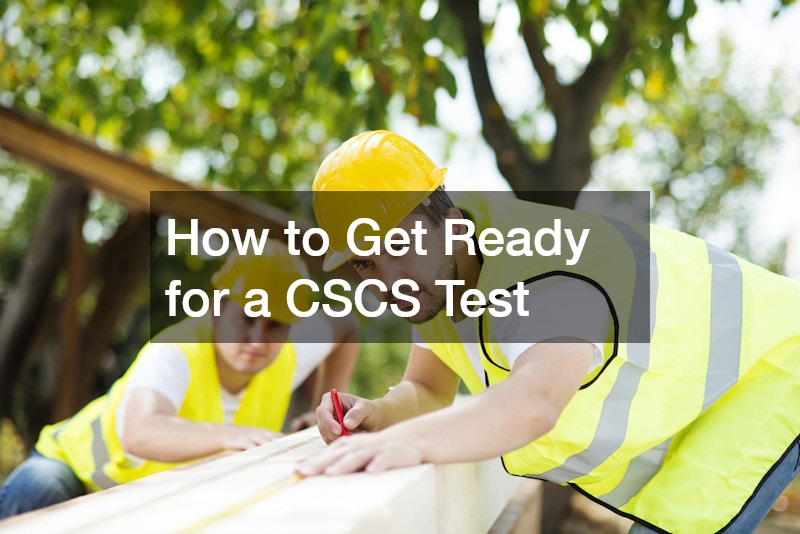The Construction Skills Certification Scheme (CSCS) test is essential for those looking to obtain a CITB card and work safely on construction sites in the UK. Proper preparation is key to passing the test and ensuring you’re well-versed in health, safety, and environmental practices. Below are some practical tips to help you get ready for the CSCS test and earn your CITB card.
1. Understand the Structure of the Test
The CSCS test consists of 50 questions, and you need to score at least 45 to pass. The questions are drawn from various categories, including health and welfare, working at heights, dust and fumes, and more.
Familiarize yourself with these categories, as they represent the core topics covered in the test for CITB card.
2. Take Your Time with Each Question
One of the biggest mistakes people make is rushing through the test. You have 45 minutes to complete the test, which is ample time. Read each question carefully, ensuring that you fully understand what is being asked. Many questions have answers that may seem obvious, but subtle differences in wording can be tricky.
3. Focus on Common Sense, but Be Cautious
While many CSCS test questions rely on common sense, remember that everyone’s version of common sense can differ. Even if the answer seems straightforward, take a moment to verify it against your knowledge of safety practices. Don’t make assumptions—careful reading is key.
4. Learn the Industry Jargon
The CSCS test often includes technical terms used in the construction industry. Terms like “marshal,” “fall arrest equipment,” or “MEWP” (Mobile Elevating Work Platform) may come up. If you’re unfamiliar with these terms, study up on construction jargon to ensure you’re not caught off guard.
5. Use Elimination Techniques
For many multiple-choice questions, there are typically one or two answers that are clearly wrong. Eliminate these first to narrow your choices, then consider the remaining options carefully. For example, if the question involves handling a hazardous substance, the answer that involves unsafe behavior (e.g., using a naked flame) can usually be ruled out.
6. Look for Patterns in the Answers
In questions about safety or procedures, answers that mention being “trained,” “appointed,” or “competent” are often correct. For example, if a question asks who should signal a vehicle on-site, it’s likely to be someone who is trained or appointed for that job. These are key words that often indicate the right choice.
7. Familiarize Yourself with Hazard Symbols
The CSCS test frequently includes questions about identifying and dealing with hazardous materials. You’ll need to recognize symbols for flammable substances, toxic chemicals, and other dangers. Be sure to review hazard symbols and their meanings, so you’re confident in selecting the correct response.
8. Understand Manual Handling and Safety Gear
Many questions on the CSCS test revolve around personal safety on construction sites, particularly in relation to manual handling and the use of personal protective equipment (PPE). Ensure you understand how to lift objects safely, the importance of PPE (like gloves and helmets), and how to use safety gear effectively.
9. Review Health and Safety Regulations
Brush up on the health and safety regulations that govern construction work, including the Health and Safety at Work Act. Many questions in the test for CITB card will test your knowledge of employer and employee responsibilities under these laws. Being well-versed in these regulations will help you answer questions accurately.
10. Practice Mock Tests
There are many resources available for practicing CSCS test questions. Taking several mock tests will give you a good feel for the types of questions you’ll encounter, as well as help you identify any weak areas that need further study. Practice tests also help you manage your time effectively, giving you a sense of how long to spend on each question.
11. Pay Special Attention to ‘Working at Heights’
One of the more challenging sections of the CSCS test is “Working at Heights.” This topic includes questions about safety measures like guard rails, toe boards, and fall arrest equipment. Make sure you know the correct procedures for staying safe when working at height, as this is a critical part of site safety. Taking a Working at Height mock test can help you familiarize yourself with the kinds of questions that will be asked.
12. Prepare for Specific Scenarios
Some CSCS test questions will present specific scenarios, such as what to do if you discover asbestos or how to handle a vehicle safely on-site. Think through real-life applications of the rules and safety measures you’ve learned, as these scenario-based questions often test your ability to apply knowledge practically.
13. Flag Questions for Review
During the test, if you’re unsure about a question, flag it for review. Once you’ve completed the rest of the test, you can go back and take another look at any flagged questions with a clearer mind. This helps ensure you don’t waste time early in the test and can come back to challenging questions later.
14. Stay Calm and Confident
Finally, confidence is key. You’ve studied, taken practice tests, and reviewed the necessary materials. On test day, stay calm, take deep breaths, and trust your preparation. Keeping a cool head will help you focus and perform better.
Passing the CSCS test and obtaining your CITB card is essential for working safely on construction sites in the UK. By carefully preparing, understanding key topics, and practicing your test-taking strategies, you’ll be well on your way to success. Remember to take your time, eliminate wrong answers, and focus on understanding the safety measures that protect you and your colleagues. Good luck!


